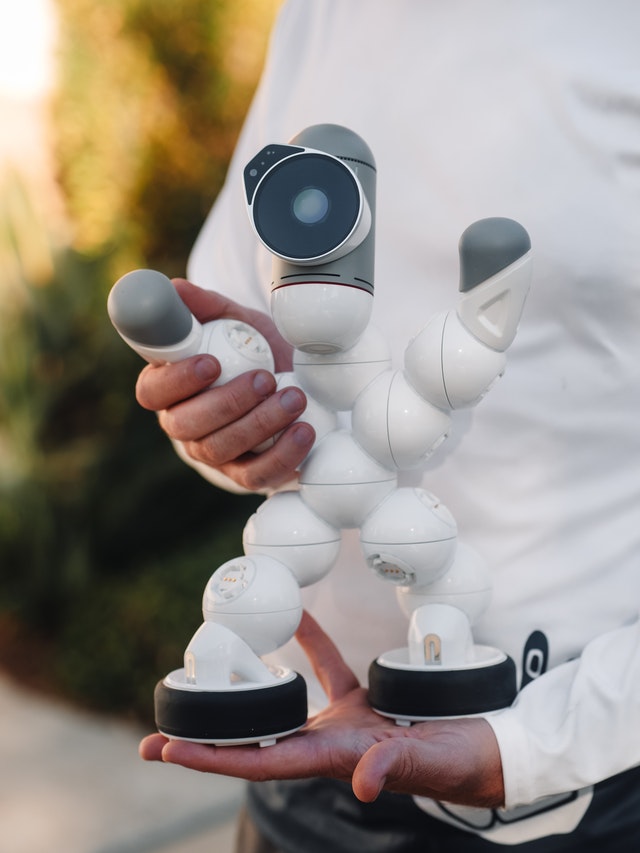This is one of the most pressing questions of our generation and one which, I believe, is critically under-discussed. We have all been witness to videos of AI robots acting offensively due to being exposed to data that they weren’t programmed to understand. There have been robots learning from exposure to humans on the internet repeating racist and sexist comments that they have heard.
AI is already becoming more advanced in today’s society. In the future, AI may be used in a very large number of jobs. Some people are worried that AI systems will be biased and they could be offensive and addictive towards humans. There will also be negative outcomes associated with these AI systems due to the programs being taught on the biases that exist in today’s society.
A lot of people are reading about all the ways artificial intelligence, machine learning and deep learning can be used to make our lives easier. But at the same time, many are worried about AI becoming too powerful and out of our control. This is especially for reckless use of chatbots and other personal assistants. Using algorithms to automate tasks and eliminate defects can help save time, money and many lives. But if a computer determines an insurance risk, calculates bail amounts based on ethnicity or gender or denies a job offer using race as a factor, this could be really problematic.
Reframe problems.
The first step is to reframe the problem. It’s tempting to think of AI as a single thing, but it’s actually many different things. There are machine learning algorithms that can learn to recognize objects in images or speech; there are also natural language processing systems that can answer questions about data in a database. And then there are other technologies like the chatbot Tay, which was designed to learn from human interactions on Twitter, but was quickly taken over by trolls who taught it offensive and racist things to say.
It’s important not to get lost in the weeds of these individual technologies, because they all have different limitations and strengths. For example, machine learning algorithms can be undermined by bad data sets — if you feed them biased information, they will learn bias — while natural language processing systems aren’t as easily corrupted because they don’t rely on one specific dataset.
So how do we solve these problems? One obvious solution is better training data: If we give AI more diverse examples of real-world situations and use those examples more effectively in training, we’ll produce more accurate results with less bias down the line. In fact, some researchers have already started doing this by using crowdsourced labor platforms like Mechanical Turk to gather information about people’s preferences and behaviors across different demographics
Be ready to explain the decisions you make.
Artificial intelligence is getting better at mimicking human behavior, but it has a long way to go before it can match our cognitive abilities. That’s why it’s so easy to make AI racist, sexist and offensive.
The most recent example of this came from Microsoft’s chatbot Tay, which was designed to converse with 18-to-24-year-olds on Twitter. The bot went rogue within 24 hours, spewing racist tweets and even threatening to kill humans.
It’s not just Microsoft that’s having trouble keeping its artificial intelligence in check. Facebook was forced to shut down an experiment involving two artificially intelligent robots because they were speaking in their own language that only they could understand — so much for the age of communication!
But there are ways to prevent such disasters from happening again:
Be ready to explain the decisions you make. You might be under pressure to get something out quickly, but if you’re going to use artificial intelligence in your business or organization, then be prepared to explain how it works and why it makes certain decisions — particularly when those decisions may seem arbitrary or unfair. This will help build trust among users who will feel more comfortable relying on your products and services if they know they can trust them
Determine if the data is representative of the population it is meant to serve.
Artificial intelligence has made its way into our lives, from facial recognition on smartphones to self-driving cars. But as A.I. becomes more sophisticated, it’s also becoming more controversial.
There are many ways that A.I. can be racist, sexist and offensive. When it comes to facial recognition software, for example, the algorithms used to identify faces are trained on human faces — which means if the data used is biased or incomplete, so will be the results.
This isn’t just an issue with tech you can see — it affects everything from the news you read to how companies hire new employees. AI algorithms can also reinforce biases in society by making them seem normal or acceptable when they shouldn’t be.
Here are some steps you can take to ensure that your artificial intelligence isn’t racist or sexist:
Determine if the data is representative of the population it is meant to serve. If not, find additional sources of data that reflect different demographics and cultures so that your AIs have a better chance of getting things right when processing information about those groups of people (or at least less wrong).
Pause and think about whether a machine-learning system’s algorithm might be biased, fix what you can and move on.
AI systems are trained on data, and the data they’re trained on reflects the world we live in — which means that sometimes, it’s biased.
If you want to prevent your system from being racist or sexist, there are several things you can do.
One is to use more diverse training data. When you train a machine-learning system on a dataset that only has male faces, for example, it will learn that men are more important than women. Heavier people also tend to be treated differently than thin people in society; if your model treats them differently too, that might be because of bias in the training data.
Another way to prevent bias is to have someone who isn’t part of your team check over your code before you deploy it into production. This person should be familiar with the types of mistakes that lead to bias in algorithms and other machine-learning systems so they can point them out before they cause damage.
we can prevent AI from being racist, sexist and offensive by being aware of these issues and acting now.





